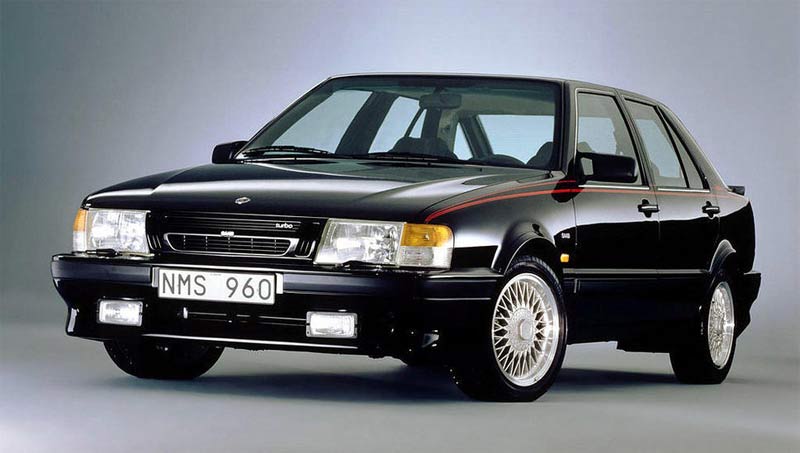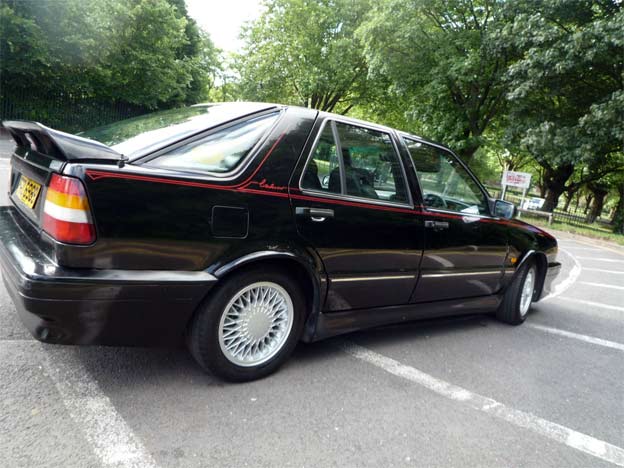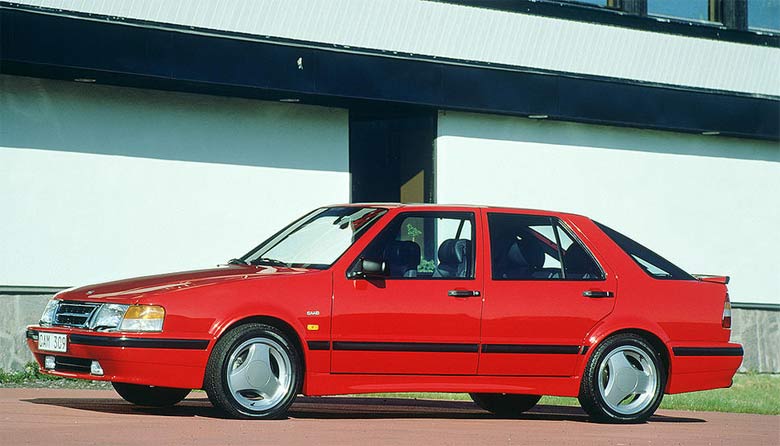“Performance with responsibility” was the Saab sales slogan for the early Nineties. All Saab Carlsson models were exceptional.
It’s said that sporting success improves the breed – and this was certainly the case for Saab. The “Carlsson” (models) takes its name from legendary Swedish rally ace Erik Carlsson, who secured numerous wins for Saab in the Sixties. In markets outside the UK, it was known as the Talladega in honour of the 19 endurance records set by three standard turbocharged 9000s at Talladega Speedway in the US in 1986. In the UK, however, it carried on the tradition of the Saab 900 Carlsson and took its moniker from Swedish rally legend Erik Carlsson.

Just one of the great from the Carlsson series was Saab 9000 Carlsson. This 9000 harvests 220 bhp for delivery to the front wheels only (of course). In that time, A near £27,000 Carlsson delivers the no-cost option of automatic or manual transmisson; the extensive “airflow” body kit; suede leather seat insets, stiffened sports suspension, TCS traction assistence and another 20 bhp (standard 9000 200 bhp) coupled to a 3lb ft torque top up.
Is the Carlsson worth £4,500 more than the lowest cost 2.3-litre Turbo? it is, however, the enormous pulling power was in the advertised supercar league – the acceleration recorded was 50-70 mph (80-112km/h) in fifth at an average 6.1 seconds. That was 1.7 seconds faster than standard 2.3 turbo moves from 50 to 74 mph, performance which Saab state ia already faster than a Ferrari Mondial! This, overtaking in not a problem in the Saab Carlsson derivative.
Nor is fuel consumption excessive, the cheaper (than) unleaded grades being required to appease the standard catalytic convertor. 21.1 mpg running average, one that included performance tests, was right in line with the 22.6 urban figure that Saab quote for both Carlsson and standard 2.3 litre turbos.

Original Carlsson Saabs, which had slightly over 200 bhp from 2 litres, had softer dumper settings that were the work of the man himself and UK Saab executives over British roads – lower + stiffer philosophy.
The aerodynamic body kit was comprehensive, well-made and equally concientiously fitted. The Aerodynamic drag factor, however, remains unaltered at a claimed 0.34Cd. The front spoiler apron carries auxiliary lights from Hella, side sills are subtly deepened and the rear wing is mounted on two pylons rather than laying flush with the body. An under-bumper section finishes the aero appereance agenda.

In the field of engine modifications, variable boost pressure and remapped ignition curve were impotant ingredients, rather than increasing the 1 bar boost at power peak. Said curve was remapped to allow substantial amounts of overboost at lower rpm. This is betrayed by behaviour of the boost gauge under fifth gear strain, when it exhibits boost well into the red sector between 1100 and 2000 rpm. Thereafter APC reduces such transmission torture in distinctly visible boost reduction steps. At 2500 rpm the standard boost has been restored.

Result / acceleration and flexibility:
- Third Gear: 50 – 70 mph 3.2 seconds
- Fourth Gear: 50 – 70 mph 4.4 seconds
- Fifth Gear: 50 – 70 mph 6.1 seconds
- Standing 0.25 mile / 400m: 16.02 sec. @ 90.01mph
- MAximum speed: 140mph
Even in standard 175bhp Turbo form, the 9000 was a quick machine – especially in the mid-range. The last few Carlssons produced in 1992 were fitted with 2.3-litre 225bhp engines, and were capable of cracking 150mph and 0-60mph in under 6 seconds.











